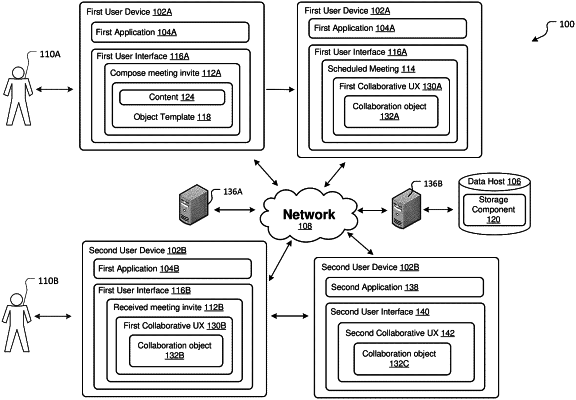| CPC G06Q 10/101 (2013.01) [G06Q 10/1095 (2013.01); G06F 3/04847 (2013.01)] | 20 Claims |

|
1. A system comprising:
at least one processing unit; and
at least one memory storing computer-executable instructions that, when executed by the at least one processor, cause the at least one processor to:
receive an indication from an organizer to schedule a meeting using a first application;
provide a meeting invitation template for generating a meeting invitation, the meeting invitation template including an object template for generating a collaboration object associated with the meeting;
receive content to the object template in the meeting invitation template via the first application for generating the collaboration object associated with the meeting;
generate the collaboration object including the content based on the object template, wherein the collaboration object comprises a portable interface providing functionality for concurrent multi-user interaction with the content in near real-time;
cause the meeting invitation including the collaboration object to be sent to at least one recipient via the first application;
cause the meeting including the collaboration object to be stored via the first application in a calendar of the organizer;
associate metadata with the collaboration object;
based on the metadata, render a collaborative user experience (UX) comprising the collaboration object, wherein the metadata comprises information for customizing the collaborative UX for at least the first application and a second application; and
cause the collaboration object in the calendar of the organizer to be automatically updated in near real-time as a first change is made to the content by the at least one recipient via the second application.
|